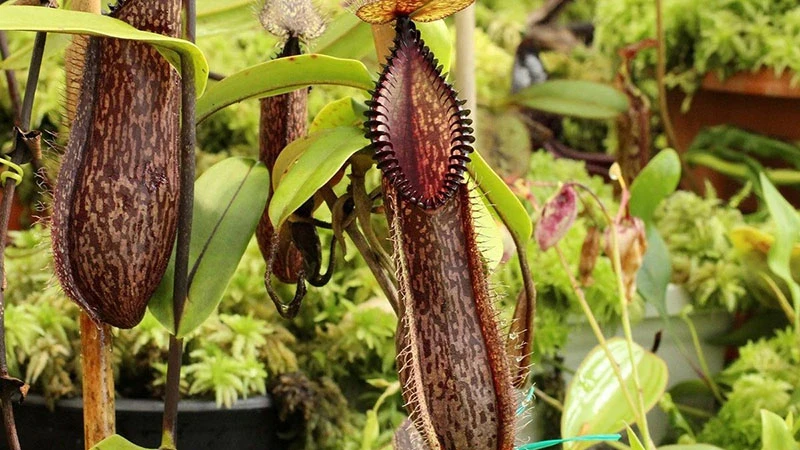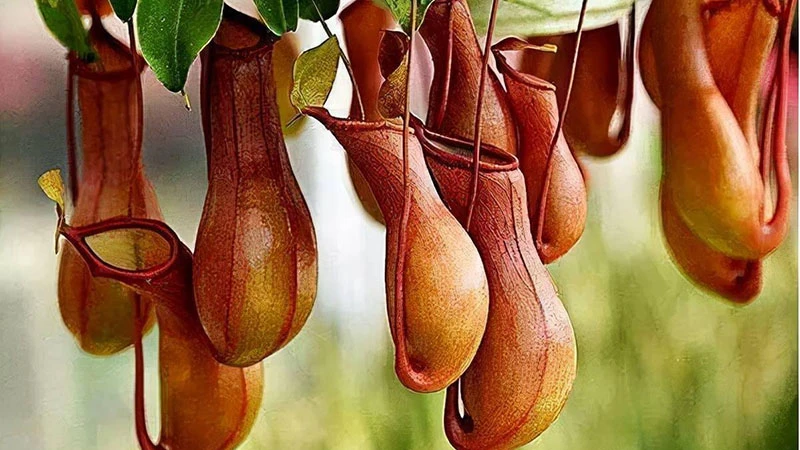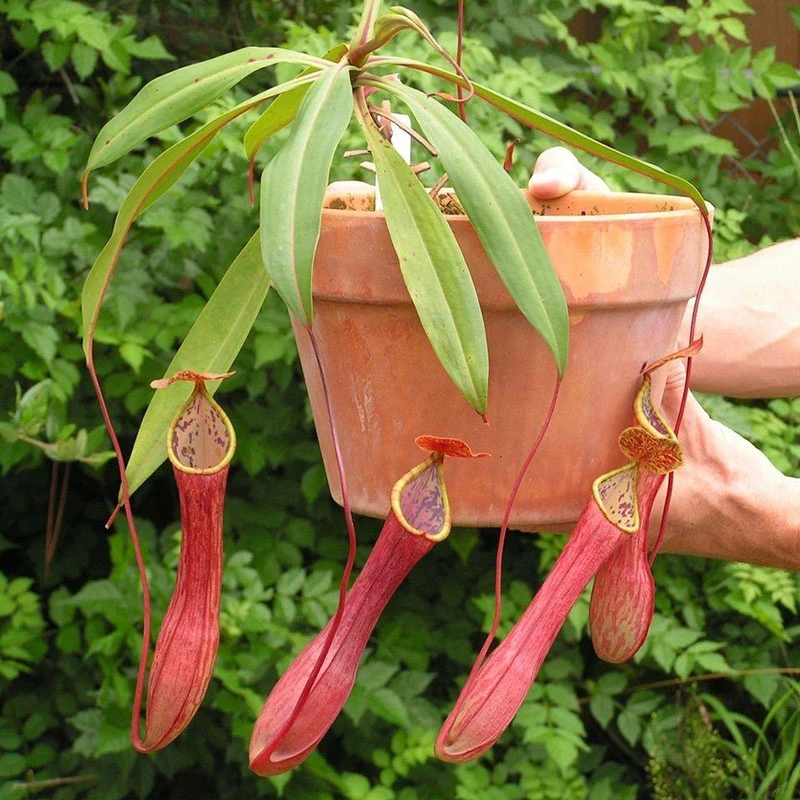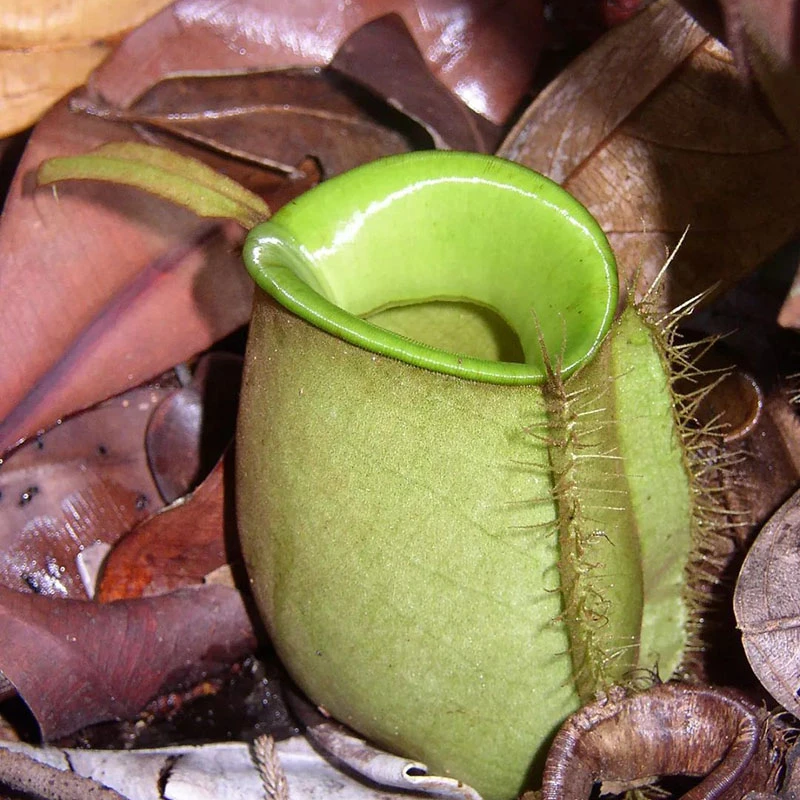In the dense wilderness, where plants and animals vie for survival, one species has developed an extraordinary strategy to thrive in the most nutrient-poor environments: the carnivorous pitcher plant. Known for its vibrant, colorful appearance, the pitcher plant attracts unsuspecting insects that curiously explore its floral beauty. However, what seems like an innocent landing soon becomes a fatal mistake, as the insects slip into the plant’s slick, liquid-filled trap.
Inside the plant’s “pitcher,” digestive fluids await their next meal. These fluids contain enzymes or bacteria, sometimes introduced by rainwater, that break down the bodies of trapped insects, turning them into vital nutrients. Over time, the insects’ struggle subsides as they are slowly dissolved, providing essential minerals like nitrogen and phosphates that the plant requires to survive.

But what makes the pitcher plant particularly fascinating is how it manages to grow in places where most other plants can’t, like nutrient-deficient soils developed from sandstone or limestone. These harsh environments, which offer little in the way of traditional plant nourishment, force the pitcher plant to rely on its carnivorous tendencies to capture sustenance.
The Unexpected Menu Expansion
For years, scientists believed that the pitcher plant’s success was purely due to its ability to catch and digest insects. However, a groundbreaking discovery in 2009 revealed a new chapter in the plant’s evolutionary journey. In the tropical mountains of Borneo, where insect populations can be sparse, researchers observed a bizarre yet mutually beneficial relationship between the pitcher plant and local animals—specifically the mountain tree shrew.
This relationship might be unexpected, but it’s brilliant in its simplicity. Mountain tree shrews use the pitcher plant as a makeshift toilet. Perching on the edge of the plant, they consume the sweet nectar produced by the plant’s lid. In return for this sugary treat, they leave behind droppings that fall directly into the plant’s waiting pitcher. These droppings provide a crucial source of nitrogen and other nutrients, acting as a replacement for the insects the plant would otherwise rely on.
What’s remarkable is how frequently this “exchange” occurs. During field observations, scientists recorded numerous instances of animals visiting pitcher plants—65 times by tree shrews and 42 times by other small rodents. On average, each plant “ate” a feast of droppings every 3.4 days, sustaining itself in ways researchers never anticipated.
But it’s not just tree shrews that have found the pitcher plant useful. Other animals, such as birds and even bats, have been observed using the plant as a lavatory. These animals, in turn, play a critical role in the survival of the plant, helping it to endure in regions where food sources are scarce.
Survival in Harsh Lands
The symbiosis between pitcher plants and small animals highlights the remarkable adaptability of nature. Evolution has shaped the pitcher plant into a formidable survivor, capable of harnessing unconventional food sources. Even the physical structure of the plant has evolved to accommodate this partnership. The pitcher’s wide rim and larger opening are perfect for allowing tree shrews to sit comfortably while they feed on nectar and, of course, use the plant as a bathroom.
This strategy has proven to be a powerful advantage. Studies show that pitcher plants that rely on animal droppings for nutrition can accumulate double the amount of nitrogen compared to those that capture insects. In an environment where nitrogen is scarce, this advantage can mean the difference between life and death.
The pitcher plant’s remarkable ability to adapt also sheds light on its status in the world today. Many species of pitcher plants are listed as endangered or threatened due to habitat destruction. These plants, which rely on unique ecosystems for their survival, are often in danger as human activities encroach on their habitats. The more we understand about the pitcher plant’s adaptations, the better equipped we are to protect not just the plants themselves, but the animals they interact with.



